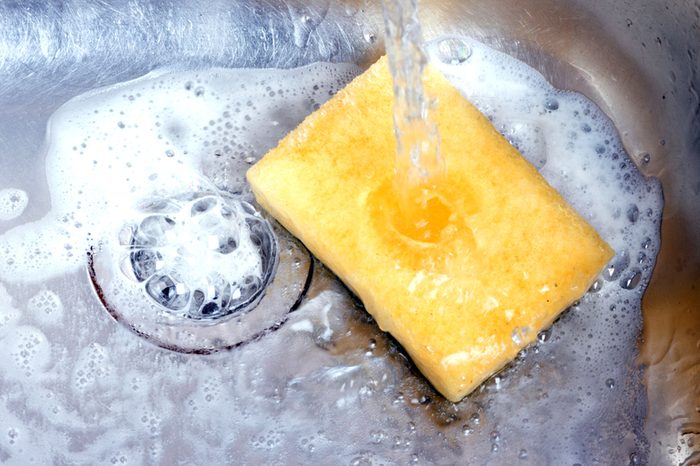
Kitchen Sponges
Your kitchen sponge is the germiest thing in your house. When researchers at the USDA tested common methods of disinfecting sponges—soaking them in bleach or lemon juice, microwaving, or washing in the dishwasher—they found that microwaving for one minute zapped the most germs, followed by a trip through the dishwasher. Place wet sponges in the microwave for two minutes once per day and replace often (every two weeks or more as needed). Cheryl Luptowski, the National Safety Foundation’s International Home Safety Expert adds that you should also sanitize dishcloths, towels and kitchen rags by washing on the clothes washer’s hot water cycle with bleach. Replace washable linens every one to two days. Your kitchen sponge is just one of your many everyday items that are actually dirtier than your toilet seat. Ick!
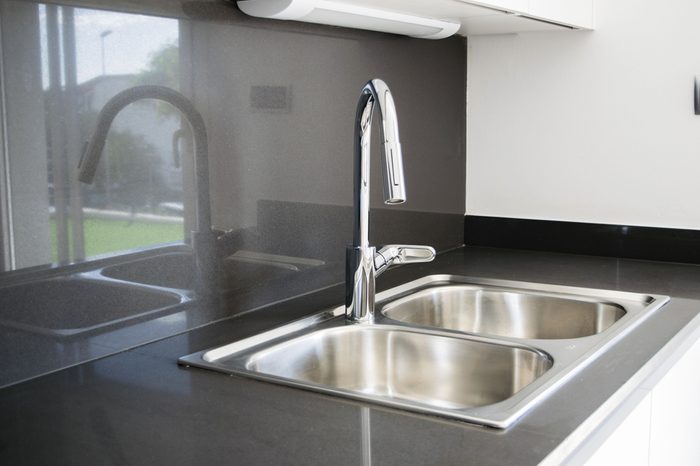
Kitchen Sink
After the sponge, the kitchen sink is the second most germ-laden place in your house (even worse than the toilet). Keep a spray bottle of cleaner handy, and spritz the sink after each use; then wipe and rinse with hot water.

Cutting Board
There are 200 times more fecal bacteria on the average home cutting board than on the toilet seat, according to research by Charles Gerba, a microbiologist at the University of Arizona, and a nationally known expert on household germs. To get it clean, run it through the dishwasher; spray it with straight 5 percent vinegar, and let it set overnight; microwave it on high for 30 seconds; or swab it with alcohol.
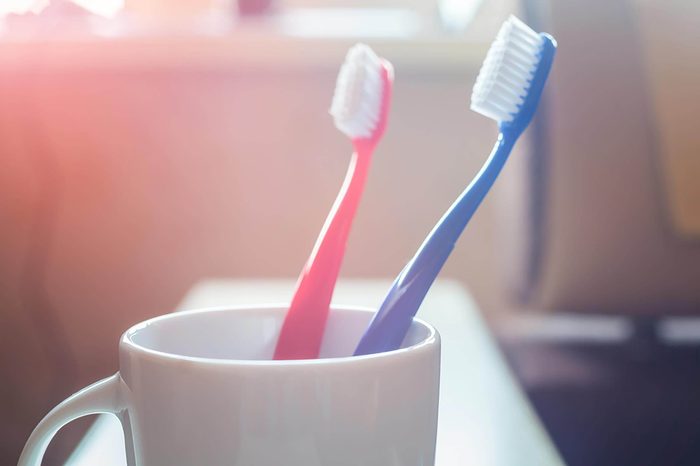
Toothbrush
Store your toothbrush at the opposite end of the bathroom from the toilet, in an upright position, so the water drains away from the bristles. Never store a wet toothbrush in a closed case. And don’t let the bristles of family members’ brushes touch. Still worried about germs? Consider a dunk in antimicrobial mouthwash. Studies show that a soak can eliminate germs. Don’t reuse the disinfecting liquid or soak more than one brush in it. Finally, if you’ve been sick, replace your toothbrush after you recover so you don’t reinfect yourself. Keep an eye out for these 10 things in your house that could be making you sick.
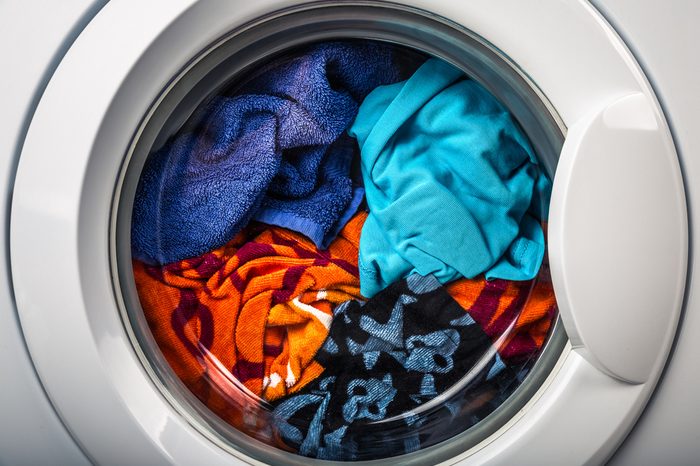
Washing Machine
Yes, even laundry can make you sick. “If you do undergarments in one load and handkerchiefs in the next, you’re blowing your nose in what was in your underwear,” Dr. Gerba notes. Make your underwear the last load, and at least once a month, run a hot cycle with vinegar to clear out germs in the machine. Also be sure to move washed laundry to the dryer as quickly as possible. Germs that survive the wash can start flourishing quickly. Taking wet laundry out of the washer as soon as the cycle ends will also help reduce the musty build up, explains Molly Maid, a leading house cleaning company.
If you’re worried about laundry after someone gets sick, the best way to sanitize clothes that might contain disease-carrying germs is to wash them in warm water using a concentration of 10% bleach (1 cup concentrated bleach per gallon of water is more than sufficient), explains Peter C. Iwen, PhD, a Professor of Pathology and Microbiology at the University of Nebraska Medical Center.
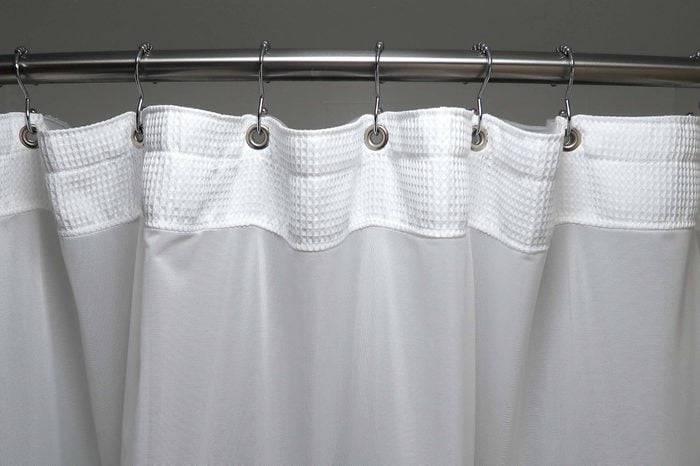
Shower Curtain
Shower curtains get wet every single day, and they often stay wet, making them a perfect habitat for mold.
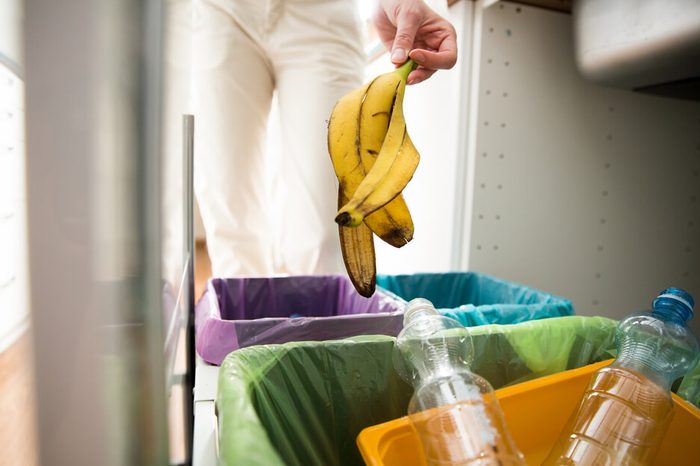
Indoor Garbage Can
Pay special attention to the garbage can in the kitchen and bathrooms, which probably have more icky trash than the ones in your bedroom or living room, shares Aaron Glatt, MD, spokesperson for the Infectious Diseases Society. To clean your garbage can, cover the bottom with a light layer of baking powder (about a half a cup, but it depends on the size) and the solution sit. Swish the mixture around, wipe down the sides and rinse with water inside the bathtub, suggests Molly Maid.
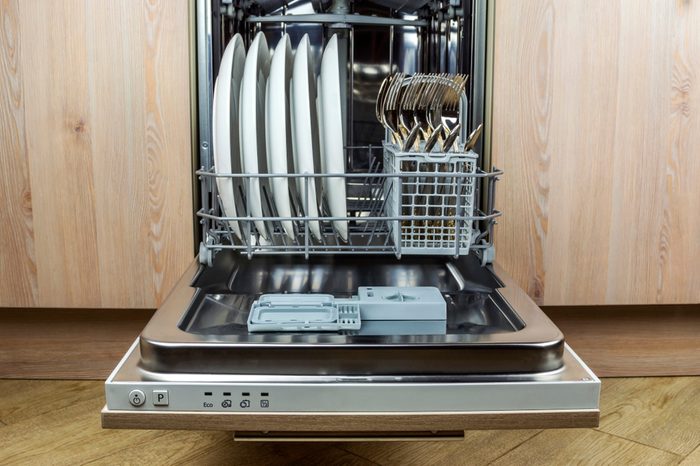
Dishwashers
Watch for Mold. Take a close look at the edges of the door on your dishwasher. Many are breeding grounds for mold and mildew. The same goes for the rubber cushioning that surrounds most refrigerator doors.
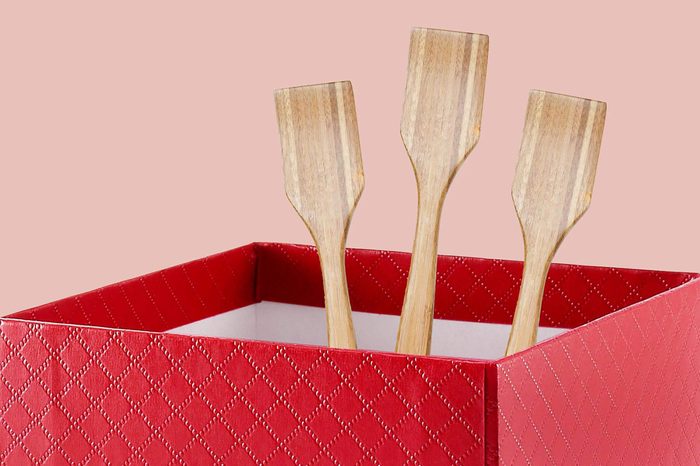
Spatulas
A 2013 survey declared rubber spatulas to be one of the top ten germiest places in your kitchen! Scientists have found E.coli, yeast and mold on them. Many rubber spatulas are two pieces—the rubber tip pops off the handle, and that means there are nooks and crannies for food remnants to collect, and that leads to disease causing germs. For two-piece spatulas separate the handle from the spatula portion and, if dishwasher safe, place both sections in the dishwasher after each use. If hand washing, wash in hot soapy water, rinsing thoroughly with clean water. Dr. Glatt advises that metal spatulas are best because they’re not vulnerable to the same sort of germ infestations as rubber and you can simply throw it in the dishwasher to clean. Aside from your kitchen, these are the 14 most germ-ridden spots in your very own bedroom.